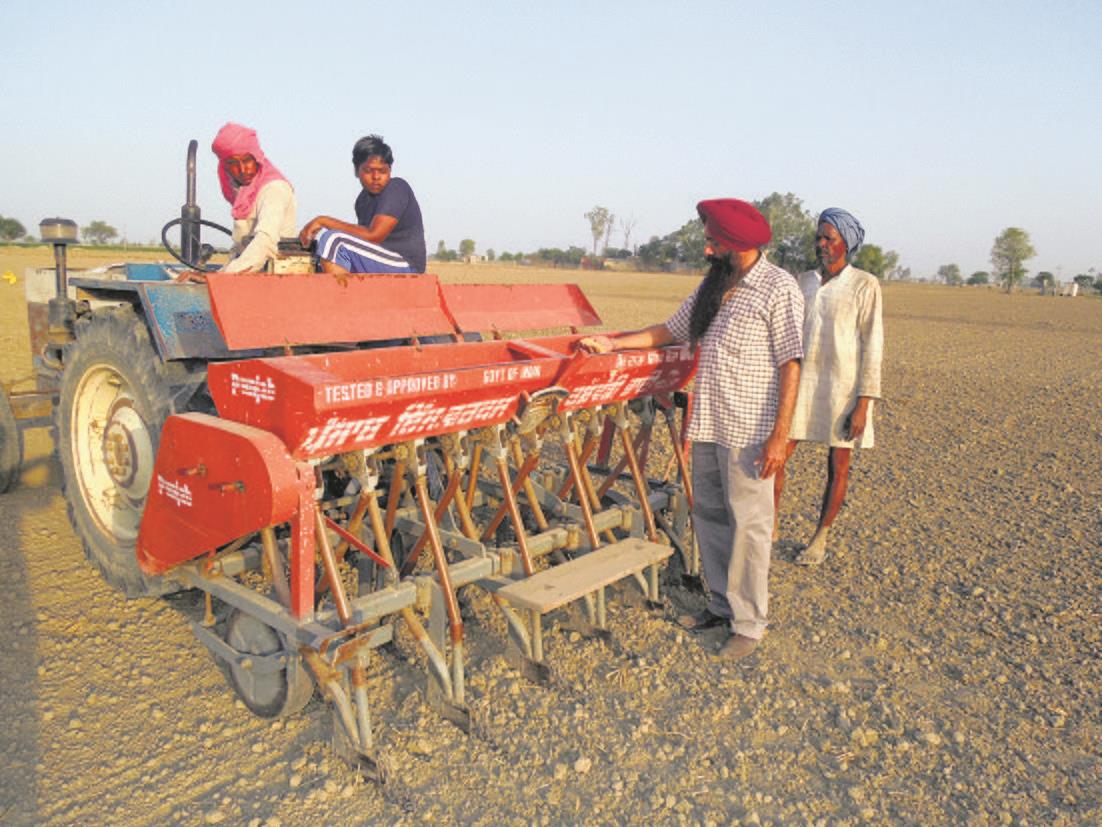INCENTIVISING direct seeding of rice (DSR) in the coming kharif season has been prioritized in the Punjab Government’s 2023-24 Budget. Primarily a labour – saving technology, its adoption as a water-saving technique is vital for a state which is on the brink of desertification due to overuse of groundwater for rice cultivation. So far, substantial results have not been achieved from crop diversification through plans to divert area from the water-guzzling paddy crop. The report of the Comptroller and Auditor General for the financial year ending March 31, 2019 (published in 2022) has revealed that despite an ambitious Rs. 274-crore crop diversification programmed, the area under paddy rather increased by 7.8 per cent between 2014 and 2019 and the area under other crops decreased by 13.49 per cent. Resultantly, there was an increase in the overexploited blocks from 76 per cent to 79 per cent in the state in 2014-17. Of the 138 blocks in total, 109 have already been categorized as overexploited.
Aimed at water conservation, Punjab’s flagship programme to promote dry DSR last year included an incentive of Rs 1,500 per acre for the farmers opting for this technique. Direct seeding of rice in more than 5 lakh hectares (ha) during 2020 and 2021 presumably led to fixing of the target of bringing at least 12 lakh ha under this technique. However, even by incentivising over 30,000 farmers, only about 7 per cent of the target could be achieved. The late announcement of the incentive left little time for decision-making by the farmers as well as for a statewide campaign by the Agriculture Department. Extending the deadline for registration by a month, from May 31 to June 30, also proved of little help as the most appropriate time for DSR was already over. Non-availability of adequate canal water due to breaches in certain areas and insufficient electricity to run tubewells for necessary pre-tilling irrigation were the other discouraging factors. The extreme heatwave was a major deterrent, along with the prospect of aggravation of the weed menace. Haryana, however, got a good response to its target of 1 lakh acres last year as 22,685 farmers registered their 1.08 lakh acres across different rice-growing districts under DSR; an incentive of Rs 4,000 per acre was offered (reduced by Rs 1,000 from the previous year) and 500 DSR machines were provided to farmers with Rs 40,000 subsidy per machine.
The DSR is yet to become an integral part of the farming ecosystem in Punjab. The area under this technique has fluctuated sharply. The precaution-laden technique is recommended to be applied in medium and fine-textured soils only, practising one pre-tilling irrigation, laser levelling and machine sowing after ensuring sufficient working moisture (tar wattar) conditions in the soil. Thereafter, within 24 hours, a precautionary herbicide application is a must to suppress germination of weeds. First irrigation is to be given after three weeks and subsequent irrigations at an interval of 5 to 7 days for maintaining sufficient soil moisture. Non-observance of herbicide application immediately after sowing and a strict water schedule may lead to the weed problem and water usage equal to that of the transplanted crop, respectively. Weeds are a major challenge in DSR fields as a number of species, the community composition of which varies with location, climatic conditions and inherent weed flora, infest the crop, compete for nutrients and adversely affect it at its initial stages of growth. The supply of spurious herbicides usually negates the efforts put in by the farmers. Such farmers generally opt to plough the crop and shift to the time-tested transplanting method even in the same season. Research trials of some reputed institutions have revealed lower yields in DSR, depending upon the soil type, weed intensity and DSR history of the fields. The development of resistance to herbicides in weeds is a major issue; the repeated use of the same herbicides should be avoided and a combination of herbicides in rotation should be integrated with different management practices.
In the US, Malaysia and Sri Lanka, more than 90 per cent of rice has been direct-seeded for the past few decades, according to a recent publication of the International Rice Research Institute. The development of herbicide resistance in weeds and the appearance of weedy rice have also been experienced in these countries. There is a need to intensify research on these aspects whereas it is crucial to develop DSR-compliant short-duration rice cultivars having traits such as early vigour, competitiveness against weeds, resistance to lodging and spikelet sterility for making DSR sustainable in the long term.
Meticulous planning, course correction, curbing the supply of fake herbicides, introducing varieties specifically suited for DSR and enhancing incentives may help in popularising DSR in Punjab.












